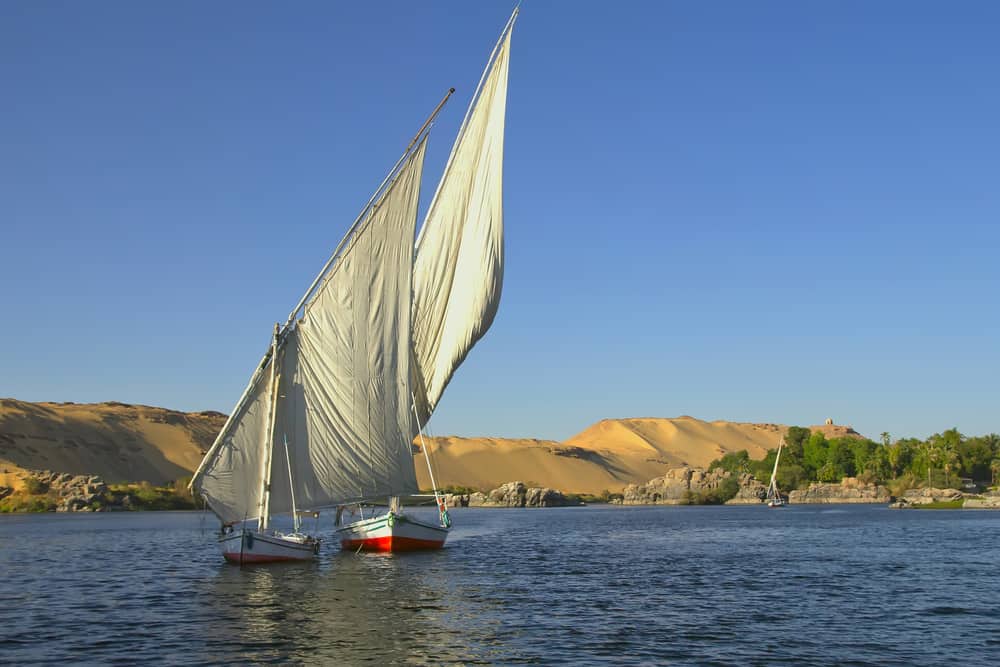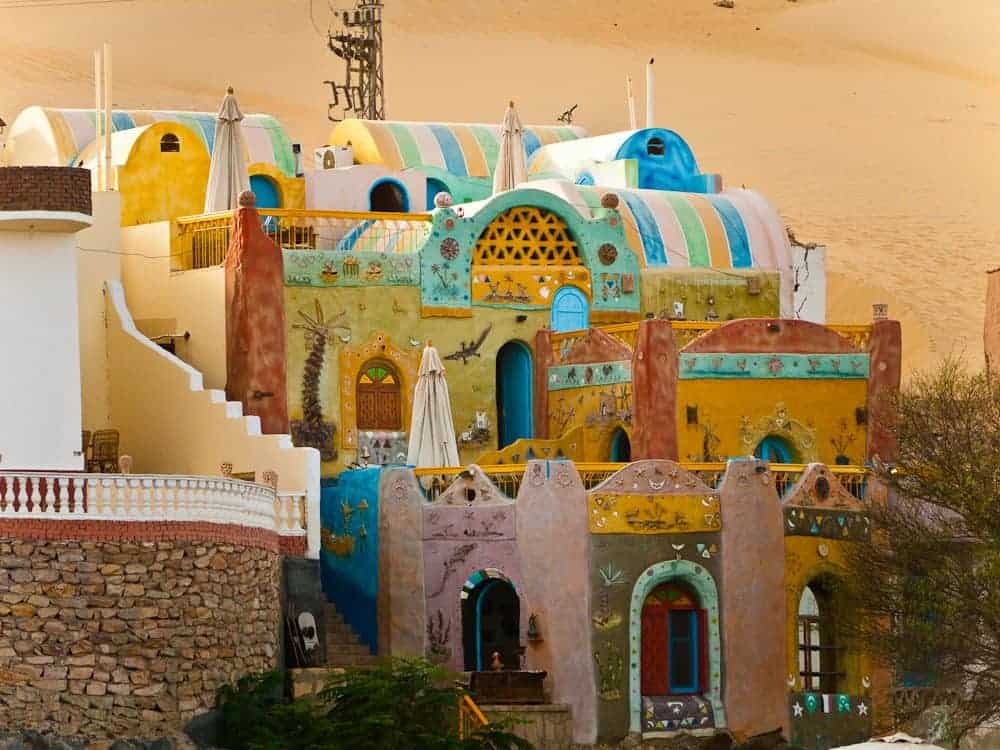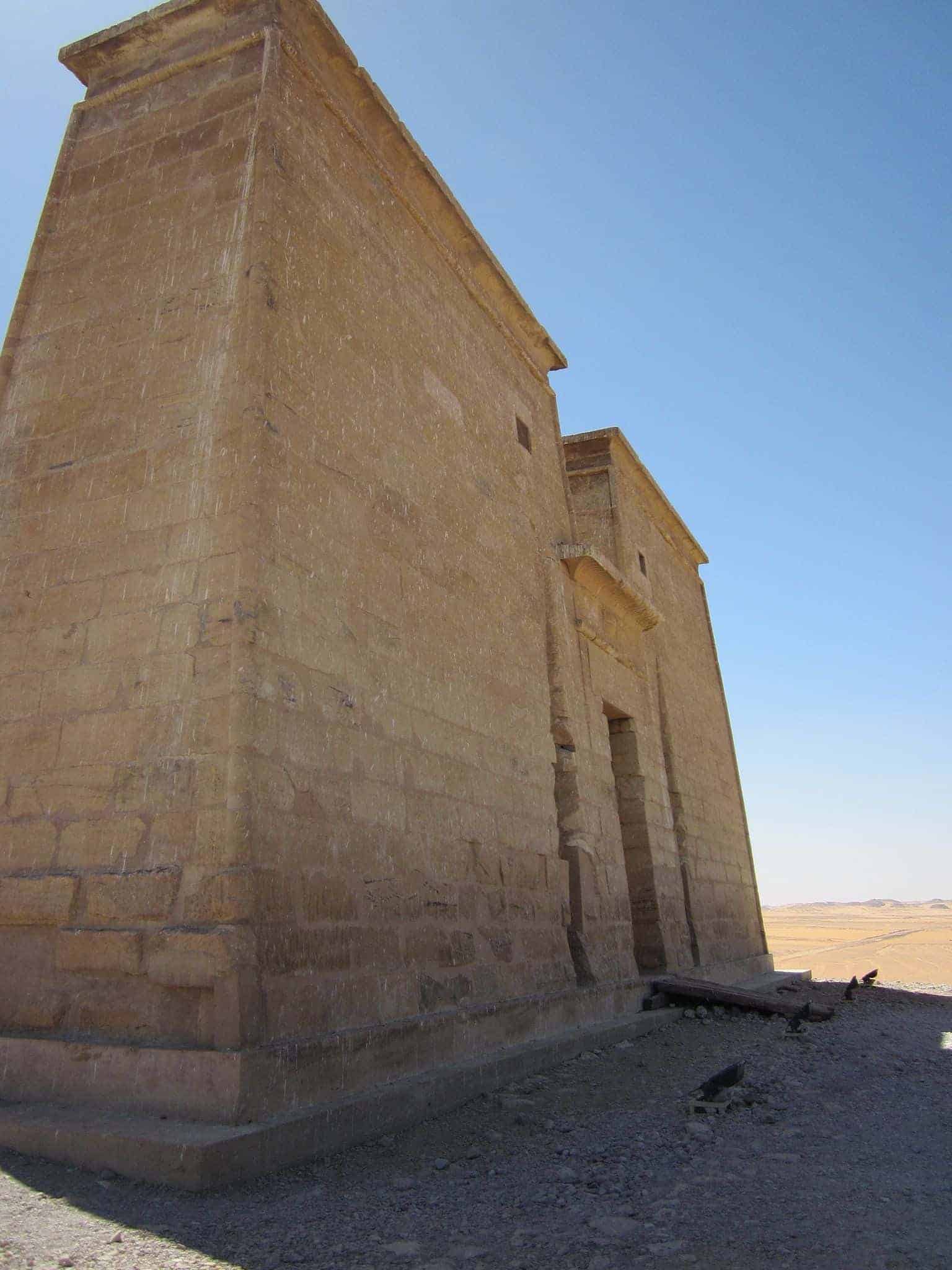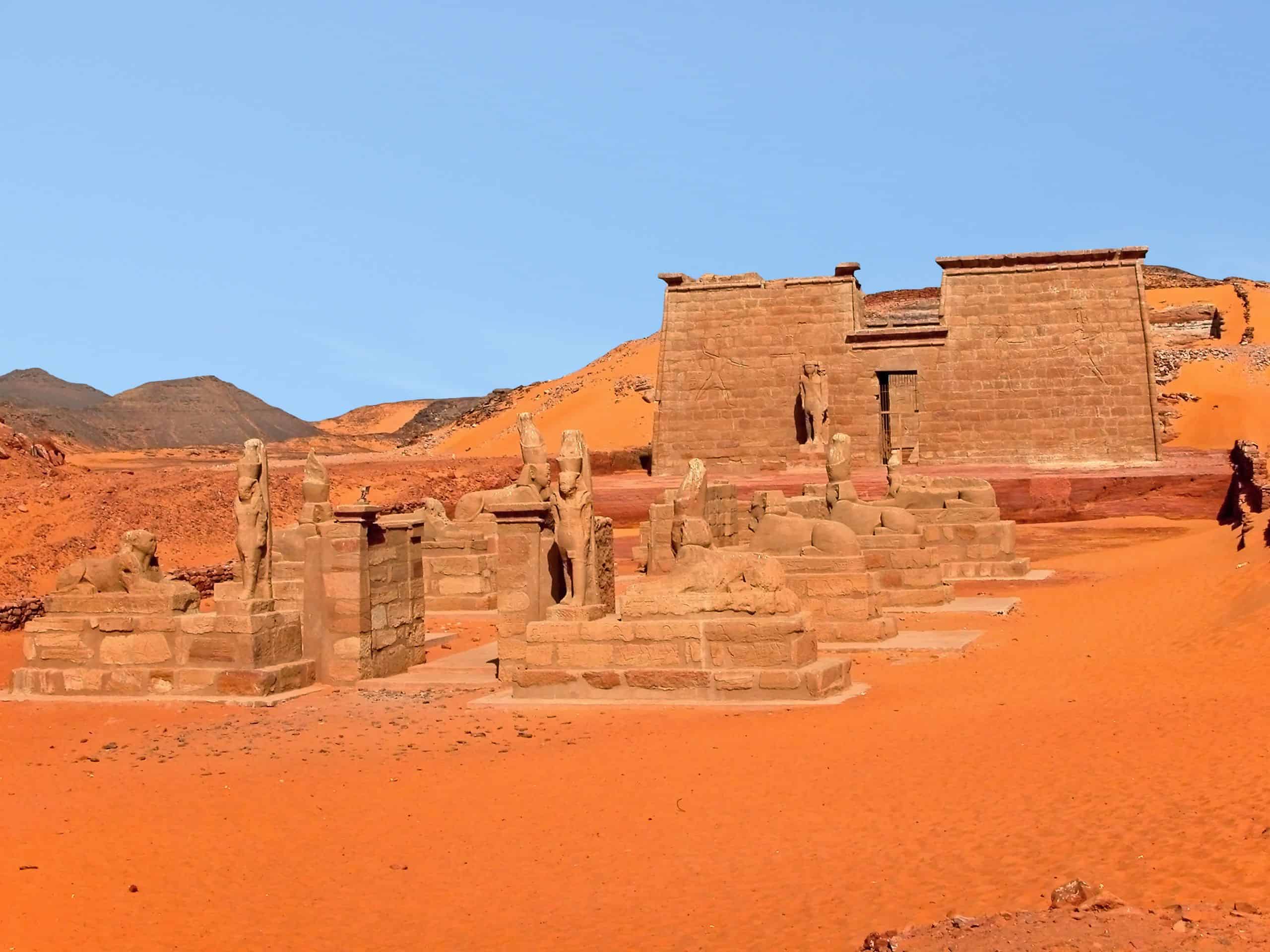What do you think of when you think of Egyptians? Do you think of the Egyptians of the past? Of the god-king Pharaohs that ruled? Or do you think of modern day Egyptians in tourism today? Drinking Egyptian coffee, selling their wares in the Kan el Khalili bazaars, or sharing their knowledge of their home country to visiting tourists?
No matter what image comes to mind, it’s important to note that Egyptians are not, and never have been, just one people. Egyptians, both in the past and as we know them today, are actually a mix of different cultures- have been for thousands of years.
If you are familiar with Egyptian history, you probably already know this and are familiar with the Nubians. But who were they? Where did they come from? How did they interact with the ancient Egyptians and where are they today?
In this post, we’ll be discussion the Nubian people, their history and importance in Egyptian culture, the contributions they made to ancient Egypt, and the temples and attractions that are known today as the Nubian Monuments.
Here’s what you need to know about the history of the Nubian people and the Nubian Monuments in Egypt.
Who are the Nubians?
The Nubians are believed to be one of oldest ethnic groups in the world. As such, these people have a rich history and culture.
The Nubians originate from the central Nile valley area, which is believed to be one of the cradles of civilization. They played a large role in ancient Egypt and then, during the medieval period, converted into Christianity and formed three kingdoms called Nobatia, Makuria, and Alodia. Today, the Nubian people practice Islam, but can still be found in the same area from which they are believed to have originate from; southern Egypt and northern Sudan. Nubians can be found in Egypt, Sudan, and even Kenya, which is famous with Nubian historical sites and African Safari as well.
While the Nubians reside in two different countries, it is important to note that they have their own culture, including their own languages. There are 5 modern Nubian languages spoken; Nobiin, Kenzi, Midob, Birgid, and Kordofan Nubian. The languages are similar, but very depending on the region in which the Nubian people live. Interestingly, because of their different languages Egypt employed Nubian speakers as code talkers in the Yom Kippur War against Israel. The Nubians played an important role in the rise and success of ancient Egypt, and are still an integral part of the country, and Egyptian tourism, today.

Nubians in Ancient Egypt
The Nubians and Egyptians had an interesting but somewhat complex relationship. They were neighbors and, as mentioned above, traded with each other. However, they also conquered each other throughout the years as well.
The First Mention of Nubians in Ancient Egypt
The first mention of Nubians in ancient Egypt dates back to 2300 BCE and was found in Egyptian trading accounts. At this time, the Nubian people and dealt in cattle, gold, carnelian, ivory, hardwood, incense, and dates which they traded with their Egyptian neighbors. Farming was a common way of life and the herd of cattle served as a symbol of wealth and status.
Nubia Under the Egyptian Rule
During the Egyptian Middle Kingdom years (2040-1640 BC), the Kingdom of Egypt began expanding in Nubia. They gained control over the trade routes and established fortresses down the Nile River. There wasn’t much interaction between the two cultures at this time but it was believed to be fairly peaceful.
The Nubians were also known as fierce warriors under the Egyptian rule, especially in terms of archery. They were referred to as the Medjay, which was originally an area of land where the Nubian’s lived but then came to mean an elite paramilitary force in the Egyptian army.
While the Nubians were known for their ferocity in battle, they worked in all aspects of ancient Egyptian society including as attendants, merchants, and temple employees.

25th Dynasty of Ancient Egypt
After years under Egyptian rule, it was during this time that the Nubians, known as Kushites during this period, conquered Egypt. The 25th Dynasty of ancient Egypt saw a line of Nubian pharaohs and rulers who, for the most part, essentially assimilated into the Egyptian culture. While the Nubians did introduce some of their culture into Egypt, for the most part they kept the same governing rules, artistic style, temples, and religious traditions. During this period of time the Nubians also revived the tradition of pyramid building. The Nubians ruled over Egypt (or parts of Egypt) for a little over 100 years but were eventually pushed out by the Assyrians.
Despite the fact that both cultures took turns conquering each other, history indicates that, over all, the relationship between Egyptians and Nubians was actual quite peaceful. There was a lot of cultural interchange and marriage agreements between the two cultures. Many Egyptian Pharoahs, even prior to the 25th Dynasty, had Nubian blood running through their veins.
Nubians in Egypt Today
After being overthrown by the Assyrians, the Nubians went back to where they originated from and have essentially stayed in the same area throughout time and can still be found there today.
An influx of Arabs to Egypt and the Sudan means that modern day Nubians now follow Islam as their faith (though, as mentioned previously, they did convert to Christians in the Medieval period).
Nubia, as we know it today, is divided between Sudan and Egypt. This happened during the end of the colonial period and only about a quarter of the Nubian population lives in modern Egypt. Unfortunately, time has not been very kind to the Nubians. Many of them were forced to leave their homes and villages along the Nile when the High Dam of Aswan was built. Additionally, Egyptian Nubians tend to be much more socio-economically disadvantaged compared to other cultures in Egypt, and are often victims of racism.
Visiting the Nubian Villages in Egypt
The majority of Nubian villages in Egypt today are located near Aswan and Elephantine Island. These villages are very different than other Egyptian villages and are often easily distinguished by the bright, vibrant colors of the houses. While the Nubians who live here are considered to be citizens of Egypt, they still retain their own culture.

It is possible to visit some of these Nubian villages during your vacation. While Nubian village visits aren’t normally scheduled into Egypt vacation packages, you can ask your private Egyptologist guide to add it on. The best place to do this is in the Nubian villages by Aswan where you can stroll around the streets, shop at the local markets (you can find some great loose leaf teas, spices, and even handmade scarves here), and learn about the local life. Not only is it a great way to learn about this part of Egypt and the Nubian culture, but the locals can benefit financially from the tourism as well. Especially if you do some souvenir shopping.
Nubian Monuments in Egypt
The area in which most Nubians live (Aswan to Abu Simbel near the Sudan border) is an archaeological area that is commonly referred to as ‘Nubian monuments from Abu Simbel to Philae’.
What makes these monuments so impressive is not only that they are incredible in their own right as relics that date back to more than 3000 years, but also that these structures all had to be dismantled, moved, and put back together in their original form upon the completion of Aswan High Dam.
The Nubian monuments from Abu Simbel to Philae is a UNESCO World Heritage Site and consists of 11 sites located between these two temples. Only 2 of these 11 sites have remained in their original location: the granite Quarries in Aswan and the fortress of Qasr Ibrim.
It’s important to note that while these are called the Nubian Monuments, they were not built by the Nubian people. They are given the name based on their location. That being said, it is believed that some of these temples and monuments were built as a way for Egypt to show its greatness and its power to the Nubian people. As indicated above, Egypt’s power waxed and waned over Nubia and it’s assumed that temples such as Abu Simbel were created in part in hopes of impressing and perhaps even intimidating the Nubians.
The Nubian Monuments
Abu Simbel Temple
Abu Simbel is actually two massive carved rock temples. The largest is dedicated to the god Amun, as well as to the Pharaoh Rameses II himself who ordered the creation of the temple. The second, smaller temple is dedicated to the goddess Hathor and Rameses II’s queen, Nefertari.

Temple of Philae
The Temple of Philae is, in fact, several temples. The site was known as a place where the goddess Isis was worshipped. It was also a popular pilgrimage site for Egyptians, Nubians, and travelers from as far as Greece and Crete.
Granite Quarries
A granite quarry seems like an odd attraction, but it’s not the quarries themselves that are interesting, rather what is inside of them. The granite quarry in Aswan is home to two unfinished obelisks. One of the obelisks, had it been completed and erected, would have been nearly one third larger than any other obelisk in Egypt. It is believed that the obelisk was commissioned by Hatshepsut, but that has never been confirmed.
Qasr Ibrim Fortress
Qasr Ibrim was once a fortress and a major city perched on a cliff above the Nile. Today, after the construction of the dam, Qasr Ibrim is actually situated on a rocky island in the middle of the Nile River. Unfortunately, it cannot be visited by tourists.
Temples of Kalabsha
The Temple of Kalabsha is relatively new in comparison to other Egyptian temples. It was built around 30 BC during the Roman era. The temple was a tribute to the Nubian sun god Mandulis. However, it was never completed.

Temple of Beit al-Wali
Beit al-Wali is another temple that was built by Rameses II. Like Abu Simbel, this was one of Ramesses II Nubian temples built in order to try to maintain Egyptian control over Nubia. It is believed that this was the first temple built to serve this purpose.
Temple of Dakka
Originally just a small shrine dedicated to Thoth, the Temple of Dakka was expanded during the Roman period and used as a fortress along the Nile River.

Temple of Maharraqua
The temple of Maharraqua is a small, unfinished temple with an unknown history. Scholars have been unable to figure out who built this temple and why. It does have one very unique factor; a winding staircase that leads to the roof. This is the only one of the Nubian monuments with this feature.
Temple of Amada
The temple of Amada is the oldest temple in Nubia. It was built in the 18th dynasty by pharaoh Thutmose III and dedicated to Amun and Re-Horakhty. Several pharaohs added to this temple over time, included Ramesses II.

Temple of Derr
Temple of Derr was also constructed by Ramesses II. It’s a rock- cut temple and was dedicated to Re-Horakhty.
Kiosk of Quertassi
A tiny Roman Kiosk with 6 columns. While it remained unfinished, what can be seen of the structure is beautiful.
Wadi as-Subua
Another rock temple built by Ramses II as part of his Nubian temples. Today, it resides in a valley with two New Kingdom temples.

Final Word
Without a doubt, the Nubian people were an integral part of ancient Egypt as we know it. Savvy tradespeople, incredible warriors, and cunning rulers, the Nubians played a large role in the creation and success of ancient Egypt. Unfortunately, as mentioned in this article, time has not been kind to these people. However, as a tourist you can help by taking the time to learn more about their culture and importance to Egypt. The Nubians of Egypt are a warm, kind, and welcoming people so consider adding a visit to one of their villages into your Egypt tailor made tour.
Ready to book your trip to Egypt and visit some of the incredible sites built by the Nubians? At Osiris Tours, we pride ourselves in being one of the best Egypt tour companies in the market. Let us help you create the luxury Egypt tour you’ve been dreaming about.
